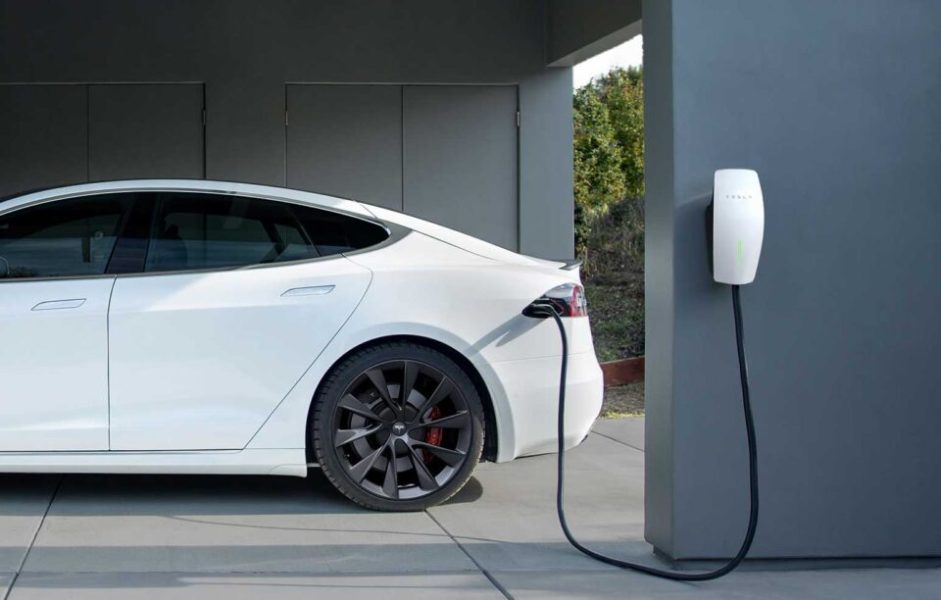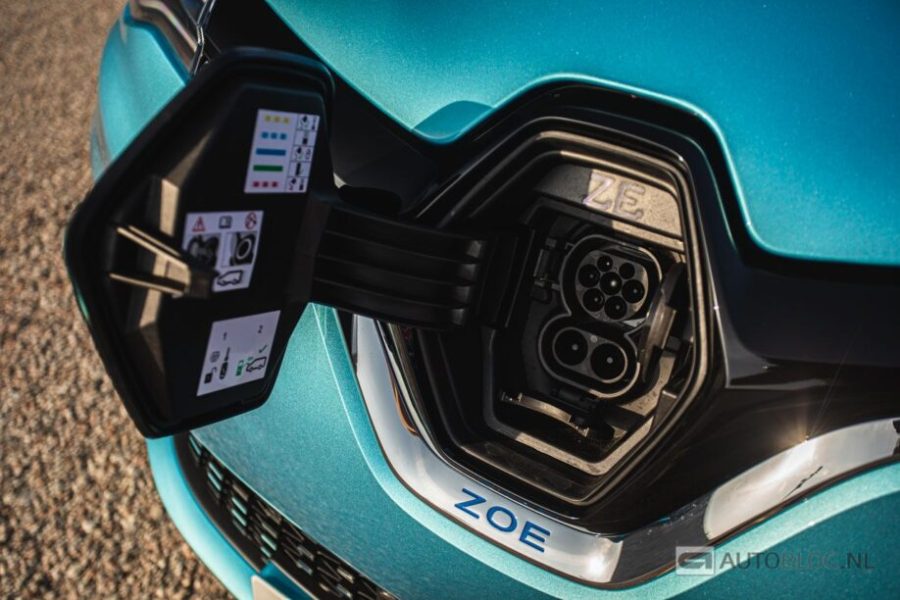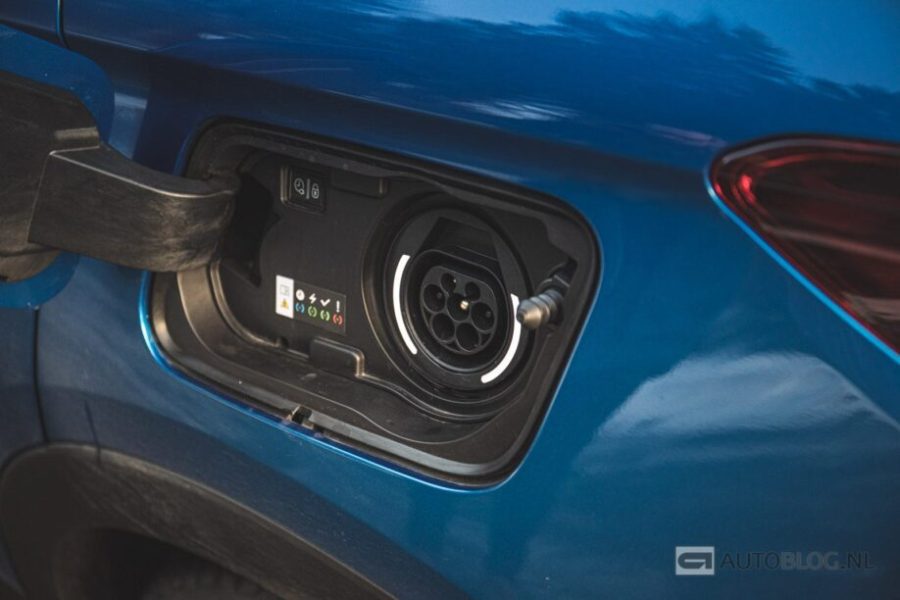
charging station
Content

Driving on electricity means you have to take care of charging the car. On the road, at work, but, of course, at home. What should you look for when buying a charging station?
This may be your first time driving an electric vehicle or a plug-in hybrid vehicle. If so, then you've probably never gotten into the charging station phenomenon. You are probably used to a car that runs on petrol, diesel, or gas. The so-called "fossil fuel" that you drove to a gas station when the tank was nearing its end. You will now replace this filling station with a charging station. Soon it will be your gas station at home.
Think about it: when was the last time you had fun refueling? Often this is a necessary evil. Stand next to the car for five minutes in any weather and wait for the tank to fill up. Sometimes you have to make a detour. Always thank you again at checkout for taking advantage of this week's offer. Refueling is not something that most people enjoy.
But now you're going to drive an electric or plug-in hybrid. This means that if you're lucky, you'll never have to go to the gas station again. The only thing that comes back is that you have to turn the car on quickly when you get home. It's a bit like putting your phone on the charger in the evening: you start again the next day with a fully charged battery.
Charging your electric vehicle
The only thing you need to "refuel" an electric car is a charger. Like your mobile phone, your plug-in hybrid or electric vehicle usually comes with a charger. The charger you get with the car is single-phase in most cases. These chargers are suitable for charging the car from a conventional outlet.
It sounds convenient, because everyone has a socket at home. However, the charging speed of these chargers is limited. For a hybrid or electric vehicle with a small battery (and therefore limited range), this may be sufficient. And even people who travel short distances will have enough of this standard charger. After all, if you drive thirty kilometers a day (which is roughly the Dutch average), you don't need to charge your entire battery overnight. You only need to replenish the energy with which you travel these thirty kilometers.
All in all, however, you will need a solution that allows you to load a little faster. This is where the charging station comes in. In many cases, charging from a wall outlet is not fast enough.
Best solution: charging station
You can of course use a standard charger, but there is a good chance this is a messy solution. You are probably using a socket in the lobby near the front door and hanging the cord through the letterbox. The cord then goes through the driveway or sidewalk to the car. With a charging station or wall box, you create a connection to the façade of your home or office. Or perhaps you can place a separate charging station in your driveway. In any case, you can implement a connection closer to your machine. This makes it tidier and less likely to trip over your own charging cable.
But a bigger and for many more important advantage: charging with the charging station is in many cases faster than with a standard charger. To explain how this works, we must first tell you about different types of power supply, different types of plugs, and multiphase charging.

ALTERNATING CURRENT
No, we're not talking about a bunch of old rockers. AC and DC are two different types of current. Or really: two different ways electricity works. You must have heard of Mr. Edison, the inventor of the light bulb. And Nikola Tesla will not seem completely unfamiliar to you either. If only because one of the largest brands in the field of electric vehicles is named after Mr. Tesla. Both of these gentlemen were busy with electricity, Mr. Edison with direct current, and Mr. Tesla with alternating current.
Let's start with DC or direct current. We also call this in Dutch "direct current" because it always goes from point A to point B. You guessed it: it goes from positive to negative. Direct current is the most efficient form of energy. According to Mr. Edison, this is the best way to use your light bulb. Thus, it became the standard for the operation of electrical appliances. Therefore, many electrical devices, such as your laptop and phone, use direct current.
Distribution to charging station: not DC, but AC
But another form of power supply was better suited for distribution: alternating current. This is the current that comes from our outlet. This means "alternating current", which is also called "alternating current" in Dutch. This form of power was seen by Tesla as the best option because it was easier to distribute power over long distances. Almost all electricity for individuals is now supplied via alternating current. The reason is that it is easier to transport over long distances. The phase of this current changes continuously from plus to minus. In Europe, this frequency is 50 hertz, that is, 50 changes per second. However, this results in a loss of energy. In addition, many devices are powered by a DC power source because it is more efficient and has a number of other technical advantages.

Инвертор
An inverter is required to convert AC current from the distribution network to DC for use in your home appliances. This converter is also called an adapter. In order for the devices to work, an inverter or adapter converts alternating current (AC) to direct current (DC). This way, you can still plug your DC powered device into AC power and let it run or charge.
The same is true with electric vehicles: depending on the manufacturer's choice, the electric vehicle operates on direct (DC) or alternating (AC) current. In many cases, an inverter is needed to convert AC power to the mains. Many modern electric vehicles have DC motors. These vehicles have an inverter built in between the charging point (where the plug connects) and the battery.
Therefore, if you charge your car at a charging station at home, but also at many public charging stations, you will be using this converter. The advantage is that this charging method can be done almost anywhere, the disadvantage is that the speed is not optimal. The inverter in the car has some technical limitations, which means that the charging speed cannot be very fast. However, there is another way to charge the car.
Fast charging station
Some charging stations have a built-in inverter. It is often much larger and more powerful than an inverter that is suitable for an electric vehicle. By converting alternating current (AC) to direct current (DC) outside the vehicle, charging can occur at a much faster rate. Of course, this is only applicable if the car has a built-in ability to skip the car's converter in the process.
By sending direct current (DC) directly to the battery, you can charge it much faster than alternating current (AC), which needs to be converted to direct current (DC) in a car. However, these charging stations are large, expensive and therefore much less common. The fast charging station is currently not particularly interesting for home use. However, this may be relevant for business applications. But for now, we'll focus on the most common charging station option: a home charging station.

Charging station at home: what do I need to know?
If you are choosing a charging station for your home, there are a number of things you need to know about connecting it:
- How fast can my charging station supply power?
- How fast does my electric vehicle charge?
- What connection / plug do I need?
- Do I want to track my charging costs? This is especially important if your employer pays for your wage costs.
How much power can my charging station provide?
If you look into your meter closet, you will usually see several groups. A separate group is usually added for the charging station. This is recommended anyway, especially if you are using the machine for business. In this case, it is also helpful to install a separate kilowatt-hour meter in this group so you can see how much energy is being used to charge electric vehicles in your home. In this way, the employer can be informed of the exact use. Or arrange a business if you, as an entrepreneur, charge your car at home. Basically, the tax authorities require a separate meter for charging an electric vehicle at home. There are also smart charging stations that track consumption, for example using a charging card or an app, but the tax authorities do not officially accept this as a registration tool.
Volt, ampere in watts
Most modern homes in the Netherlands have a group box made up of three phases, or the group box is prepared for this anyway. Usually each group is rated for 25 amps, of which 16 amps can be used. Some homes even have triple 35 amps, of which 25 amps can be used.
In the Netherlands, we have a 230 volt power grid. To calculate the maximum power for the charging station at home, we multiply these 230 volts by the number of useful currents and the number of phases. In the Netherlands, one or three phases usually have to be dealt with, two phases are rare. So, the calculation looks like this:
Volt x ampere x number of phases = power
230 x 16 x 1 = 3680 = rounded 3,7 kWh
230 x 16 x 3 = 11040 = rounded 11 kWh
So with a single phase combined with a 25 amp connection, the maximum charging rate per hour is 3,7 kW.
If three phases of 16 amps are available (as in most modern homes in the Netherlands), the same loads are shared across the three channels. With this connection, the vehicle can be charged with a maximum power of 11 kW (3 phases multiplied by 3,7 kW), provided that the vehicle and the charging station are also suitable for this.
The group box may need to be made heavier to accommodate a charging station or wall charger (wall box). It depends on the power of the charging station.
How fast does my electric vehicle charge?
This is the moment when it is easiest to make a mistake. It's tempting to pick the best, heaviest connection because it can charge your car the fastest, isn't it? Well, not always. Many electric vehicles cannot charge from multiple phases at all.
Cars that can do this are often cars with larger batteries. But they can't do that either, for example the Jaguar i-Pace can only charge from one phase. Thus, the download speed depends on the following factors:
- charging station speed
- the speed at which the car can be charged
- battery size
calculation
To calculate the time to a fully charged battery, let's make a calculation. Let's say we have an electric car with a 50 kWh battery. This electric vehicle has the ability to charge three phases, but the charging station is single phase. So, the calculation looks like this:
50 kWh / 3,7 = 13,5 hours to fully charge the battery.
The three-phase charging station can charge 11 kW. Since the car also supports this, the calculation is as follows:
50 kWh / 11 = 4,5 hours to fully charge the battery.
But now let's turn it over: the car can charge one phase. The charging station can supply three phases, but since the car cannot handle this, the first calculation applies again:
50 kWh / 3,7 = 13,5 hours to fully charge the battery.
Three-phase charging is becoming more common
More and more electric vehicles are entering the market (see Overview of Electric Vehicles Coming in 2020). As batteries get larger, three-phase charging will also become more common. Hence, to be able to charge with three phases, you need three phases on both sides: the car must support this, but also the charging station!
If an electric car can be charged from at most one phase, it might be interesting to have a 35 amp connected phase in the house. This entails additional costs, but they are quite manageable. With a 35 amp single phase connection, you can charge faster. However, this is not a very common scenario, the standard in the Netherlands is three phases of 25 amps. The problem with a single-phase connection is that it is easier to overload it. For example, if you turn on your washer, dryer, and dishwasher while your car is loading, it could overload and result in a power outage.
Basically, your car may have one or more socket outlets. These are the most common compounds:
What plugs / connections are there?
- Let's start with a socket (Schuko): this is a socket for a regular plug. Of course it is suitable for connecting the charger that comes with the car. As stated earlier, this is the easiest charging method. And also the slowest. The charging speed is maximum 3,7 kW (230 V, 16 A).
Old connections for electric vehicles
- CEE: Heavier fork available in several versions. It's kind of a 230V plug, but a little heavier. You may know the three-pole blue variant by camp. There is also a five-pole version, usually in red. It can handle higher voltages, but is therefore only suitable for locations where three-phase power is available, such as companies. These stubs are not very common.
- Type 1: XNUMX-pin plug, which was mainly used on Asian cars. For example, the first generations of the Leaf and a number of plug-in hybrids such as the Outlander PHEV and Prius plug-in hybrid share this link. These plugs are no longer used anymore, they are slowly disappearing from the market.
- CHAdeMo: Japanese fast charging standard. This connection is, for example, on the Nissan Leaf. However, vehicles with a CHAdeMo connection usually also have a Type 1 or Type 2 connection.
The most important connections so far
- Type 2 (Mennekes): This is the standard in Europe. Almost all modern electric and hybrid vehicles from European manufacturers have this connection. Charging rates range from 3,7 kW per phase to 44 kW per three phases via alternating current (AC). Tesla has also made this plug suitable for direct current (DC) charging. This makes much higher charging speeds possible.Currently, with Tesla's dedicated fast charger (Supercharger), it is possible to charge up to 250 kW with this type of plug.
- CCS: Combined Charging System. This is a Type 1 or Type 2 AC plug combined with two extra thick poles for fast DC charging. So this plug supports both charging options. This is quickly becoming the new standard for major European brands.

Therefore, before purchasing a charging station, you need to determine what type of plug you need. This, of course, depends on the electric vehicle you choose. If you are buying a new electric vehicle, chances are good that it has a Type 2 / CCS connection. There are other connectors sold, however, so check carefully which connector your vehicle has.
Charging station cost at home
The prices for charging stations at home vary greatly. The cost is determined by the supplier, the type of connection and the capacity of the charging station. A three-phase charging station is, of course, much more expensive than a grounded outlet. It also depends on whether you have a smart charging station installed. The smart charging station uses a charging card and automatically pays your employer's energy bills.
The cost of a charging station at home varies greatly. You can buy a simple charging station without screwing it yourself for 200 euros. A three-phase smart charging station with dual connection, allowing you to charge two cars, can cost € 2500 or more. In addition, many EV makers are now offering chargers. These chargers are of course suitable for your vehicle.
Additional costs for setting up a charging station and setting up at home
Charging stations and their installation are available in all shapes and sizes. Apart from the above mentioned charging station costs, there are also installation costs. But, as we explained earlier, it really depends on the situation at home. Installing the charging station can be as simple as simply wall plugging into your existing 230 V home network.
But this can also mean that the pole must be installed 15 meters from your house, that you need to stretch a cable from your meter to it. Additional groups, consumption meters or additional phases may be required. In short: costs can vary greatly. Be well informed and clearly agree with the supplier and / or installer regarding the work to be performed. This way you will not face any unpleasant surprises afterwards.